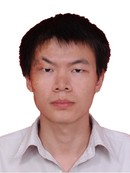
|
Events |
Seminar
Computer-vision enabled Human-Cyber-Physical Workstation for Adaptive Assembly Execution through Real-time Information Visibility and Traceability

Mr. Shiquan LING
Abstract:
Facing to the fast-changing market, manufacturers are seeking for an adaptive, flexible, and rapid response production organization to increase the opportunity of survival in the fierce competition. In these circumstances, the real-time information acquisition of the shopfloor on-site information and status plays a crucial role in dynamic decision making and adaptive production planning and control against the unpredicted disturbances. At the same time, the increasing customized demands forced manufacturers to move from mass production to flexible manufacturing for rapid response to various demands. Especially, many leading electrical companies strategically bring the one-person production unit into the final assembly stage, in which the worker manually assembles products from start to finish for enhancing the responsiveness under the “high-variety-low-volume” circumstances. Although this production mode has been proven to have a competitive efficiency and effeteness, the complexity of this human-cyber-physical system (HCPS) brings many challenges to information acquisition. Thanks to lots of significant efforts in applying wireless sensors, communication, and advanced information technologies and smart manufacturing architectures in the manufacturing environment, the feedback-based decision supports for closed-loop production planning and control through real-time information traceability and visibility. However, how to monitor the effect of human factors and process status during operation on productivity and quality asks for an improvement to the current scheme by introducing the enabling technologies.
In order to address these challenges and to explore the strengths of the HCPS production unit, a comprehensive architecture of the HCPS has been proposed. Based on this architecture, a self-adjusting assembly workstation will be developed for adapting different workers to enhance the working performance. Computer-vision technologies will be used to acquire information on human factors and process status, which will be applied for the workstation structure adjusting and parts handing according to the ergonomics principles and assembly procedure respectively. Finally, a visualization interface will be developed for assembly progress monitoring and control with real-time information traceability and visibility.
| Speakers | Mr. Shiquan LING |
|---|---|
| Date | May 5,2020 |
| Time | 1:05 pm |
| Zoom Meeting ID | 805-665-6124 |

